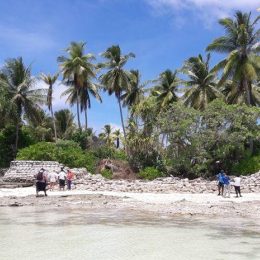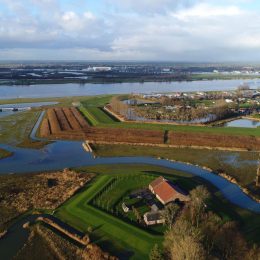Flood risks
The impact of flooding is particularly great where many people live and work. But there is also more room to invest in solutions. A positive perspective on the global approach to the effects of climate change.

Hundreds of millions of people around the world are at risk of flooding from the sea, from rivers or as a result of extreme rainfall. Every year, there are thousands of casualties and extensive damage. Population growth, economic development and climate change mean these numbers will continue to increase in the future.
Deltares is committed to making countries and regions less vulnerable to flooding by acquiring more knowledge in the field of protection, dike failure mechanisms, better quantification of risks, developing sustainable and effective solutions (such as flood risk management landscapes) and developing forecasting and warning systems. In this way, we can contribute to making the world safer for floods at an acceptable cost.
We can never completely prevent floods, but we can focus on making them more manageable. The challenges are enormous, but if we go about this in the right way now, the problems will remain manageable and we can prepare in the best way possible.
Jaap Kwadijk
Flood risk strategies
More and more countries need to quantify, and limit flood risks. Deltares assists authorities throughout the world to better understand the risks of floods and to develop strategies to cope with the global increase in flood risk.
We support a pro-active approach to integrated flood risk management, as advocated in the Sendai Framework for Disaster Risk Reduction. Deltares Flood Risk Strategies aim to improve concepts, methods and tools in three fields:
- Flood risk assessment;
- Urban flood management and critical infrastructure;
- Flood risk management: design and appraisal of strategies.
Flood risk assessment
Deltares maps out flood risks by conducting integrated risk analyses. We analyse the probability of high water levels and floods and assess the potential impacts of flooding, including loss of life, economic losses and environmental impacts.
Risk analysis provides insight into the vulnerability of specific areas, which is important for planning of spatial developments. Deltares develops and applies coherent sets of methods and tools for risk analysis on various scales, including the development of meaningful indicators, metrics and maps.
Urban flood management and critical infrastructure
Urban areas with critical infrastructures such as utility networks, roads and railways are particularly vulnerable to flooding. Critical infrastructure is not only at risk of flooding but of cascading effects as well. Deltares develops collaborative modelling tools to enhance stakeholder involvement in tracking down these risks and develop strategies for risk reduction in response.
Development of strategies for flood risk management
Strategies to be developed should comprise a well-balanced mix of both structural and non-structural measures, including measures which can be implemented on the short term. In planning for flood risk management there is a need to decide what level of flood risk is acceptable, to decide how safe is safe enough.
Risk informed decision-making looks for a ‘proportionate’ response to risk as well as a transparent process of estimating the risk and assessing the impacts of measures. To support this process, Deltares develops and applies (interactive) methods and tools for (participatory) design and appraisal of flood risk management strategies, such as planning kits and dashboards.
Related topics
Downloads
-
Floods and climate: emerging perspectives for flood risk assessment and management (686,02 KB)
-
Foreword of Conference proceedings Flood Risk (29,18 KB)
-
New, risk-based standards for flood protection in the Netherlands (431,97 KB)
-
Increasing stress on disaster-risk finance due to large floods (2,65 MB)
-
Economically efficient flood protection standards for the Netherlands (488,52 KB)
-
The meaning of system robustness for flood risk management (544,15 KB)
-
Importance sampling for efficient modelling of hydraulic loads in the Rhine–Meuse delta (591,46 KB)




